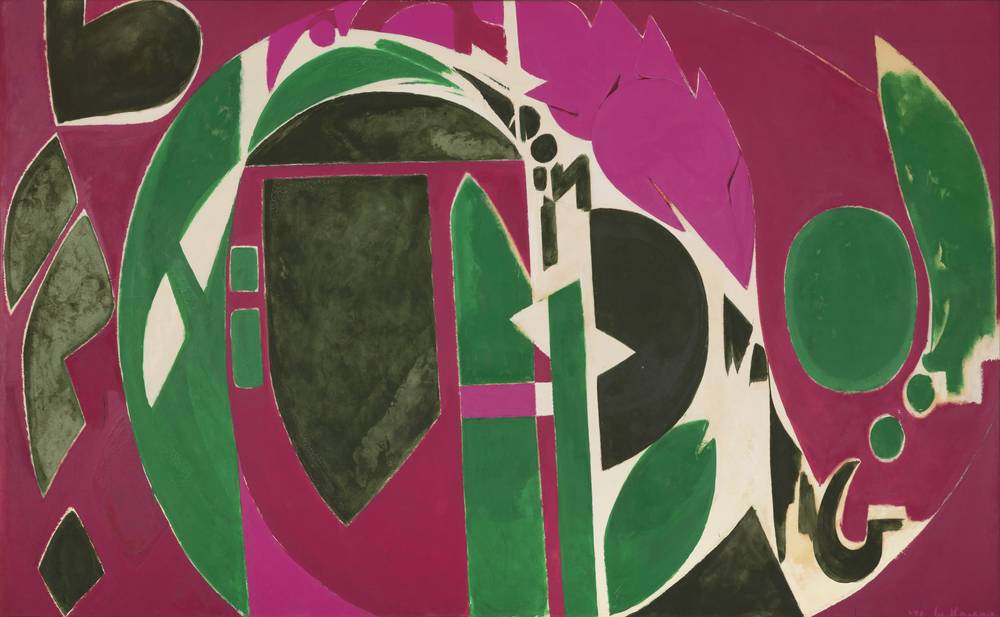She is one of the most remarkable artists of the 20th century. In a major retrospective, the Schirn shows the impressive works of the pioneer of Abstract Expressionism.
For the first time in more than 50 years, Lee Krasner’s (1908-1984) work will be on view in a European retrospective. The Schirn presents major works by the pioneer of abstract expressionism in the US, including paintings, collages and drawings, as well as films and photographs of the time. The exhibition presents works from across Krasner’s entire oeuvre, which spans more than half a century and will tell the story of one of the most remarkable artists of the twentieth century.
Driven by a great sense of purpose, Krasner took art lessons even during her time in high school, went on to study at the Cooper Union, the National Academy of Design and the Hans Hofmann School of Fine Arts. She was an active member of the association American Abstract Artists and cultivated friendships with Ray Eames, Arshile Gorky and Willem de Kooning. In New York in the 1940s, she was part of the epicenter of the movement that would become known as Abstract Expressionism or New York School together with artists such as Stuart Davis, Mark Rothko, Barnett Newman, Stuart Davis and Jackson Pollock. After the Second World War, this young generation of artists sought a new pictorial language through different artistic approaches. For a long time, Lee Krasner’s work was overshadowed by that of her husband Jackson Pollock, who was one of the main representatives of Action Painting and known for his “dripping” technique. From 1945, the couple lived and worked in a clapboard farmhouse in Springs, Long Island.
Lee Krasner constantly reinvented her pictorial language
After Pollock’s early death in a car crash in 1956, Krasner decided to use his studio as her own, initiating a new phase of her artistic career. She was able to work on large, unstretched canvases for the first time, producing some of her most important artworks. Unlike other artists of the time who also painted in a non-representational manner, Krasner never developed a “signature style,” but instead aspired to constantly reinvent her pictorial language.
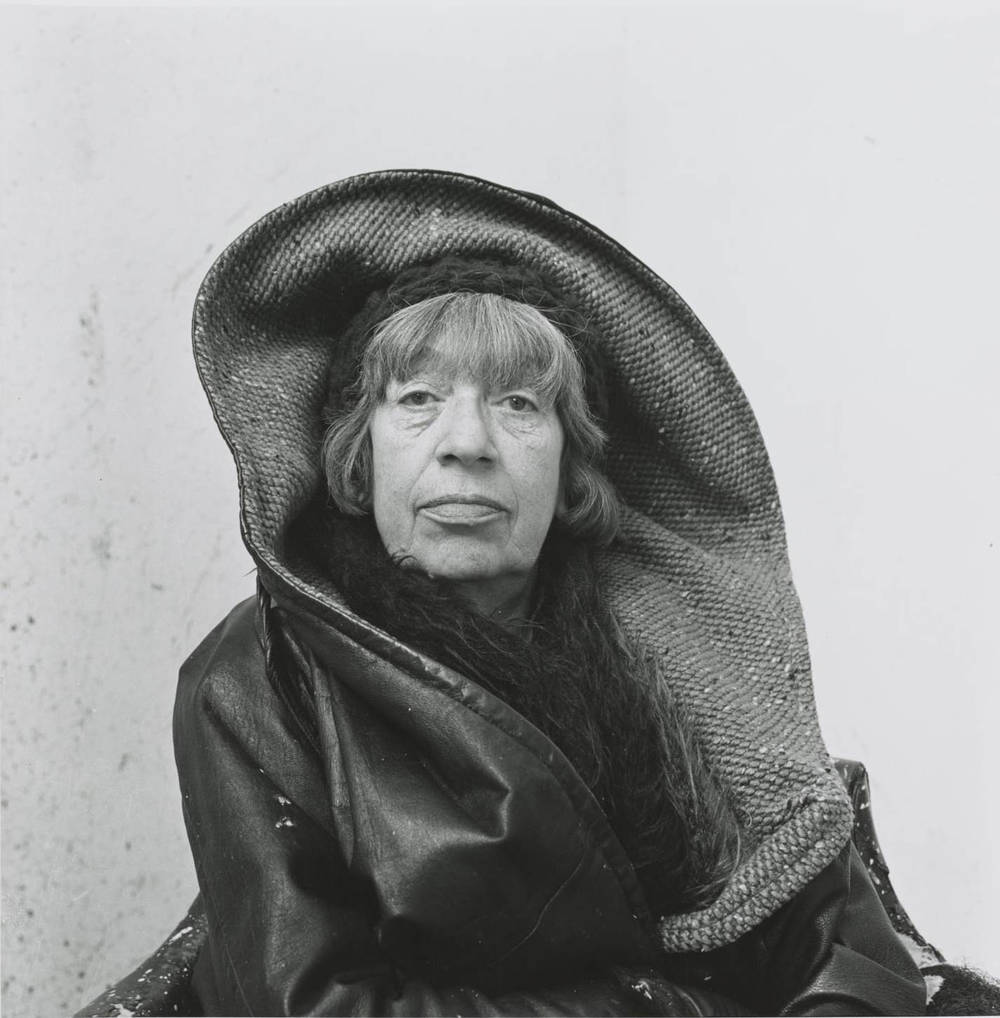
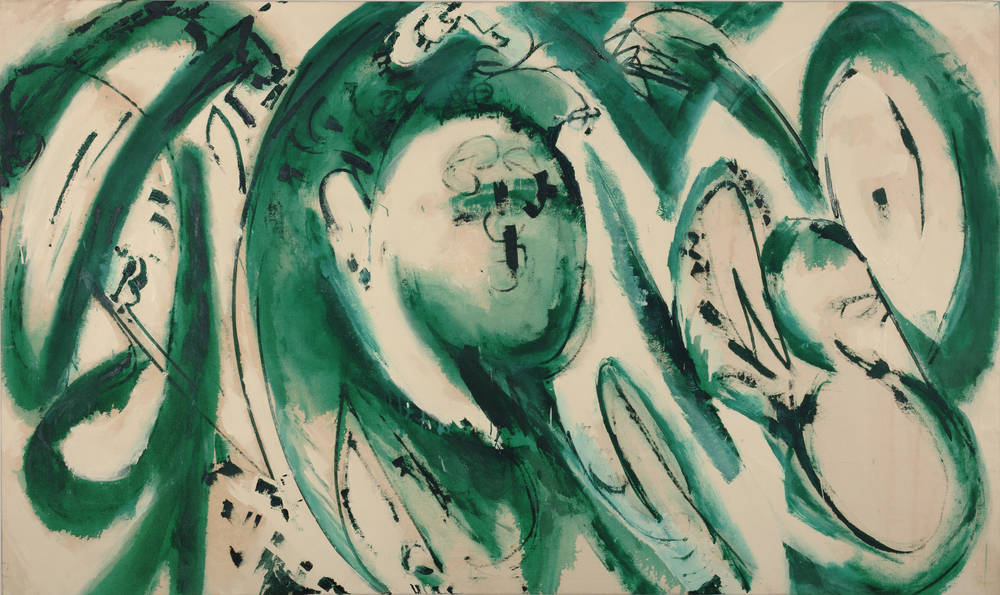
The exhibition in the Schirn is structured according to Lee Krasner’s principal periods of work from the 1920s until the 1970s. The starting point lies with her early work, which permits the viewer to trace clearly her path toward abstraction. Lee Krasner’s move to a farmhouse in Springs on Long Island with her husband Jackson Pollock in 1945 marked the first of a succession of turning points in her oeuvre. With the abstract Little Images, created between 1946 and 1950, she turned away from her early work, which had been influenced by Cubism and the European avant-garde. From the first phase of this series, the the works with their all-over technique, recall Pollock’s painting method; Krasner, however, worked in a more controlled manner using oil paint. The Schirn is also presenting later pictures from the series, which are constructed according to a strict grid and are painted from right to left—a working method that may be derived from the Hebrew script which Krasner learned to write as a child. Krasner, who repeatedly studied the ancient art of calligraphy, described these paintings as “hieroglyphic.”
She refused working with artificial light and painted only at night
Krasner referred back to her own earlier works for the first time with her “Collage Paintings.” In this series, she combined torn-up drawings and older paintings and developed a painterly approach to the technique of collage. The exhibition presents, for example, “Shattered Light,” in which the painting underneath the collage is clearly visible; the torn pieces of paper are worked almost seamlessly into the picture. . The other works shown by the Schirn include the work “Bald Eagle,” for which Krasner discarded fragments by Pollock. The painting “Prophecy” marks a turning point in both Krasner’s style and biography. She had begun it while Pollock was still alive and completed it after his sudden death. With this painting, she returned to an almost figural pictorial language based on Cubism.
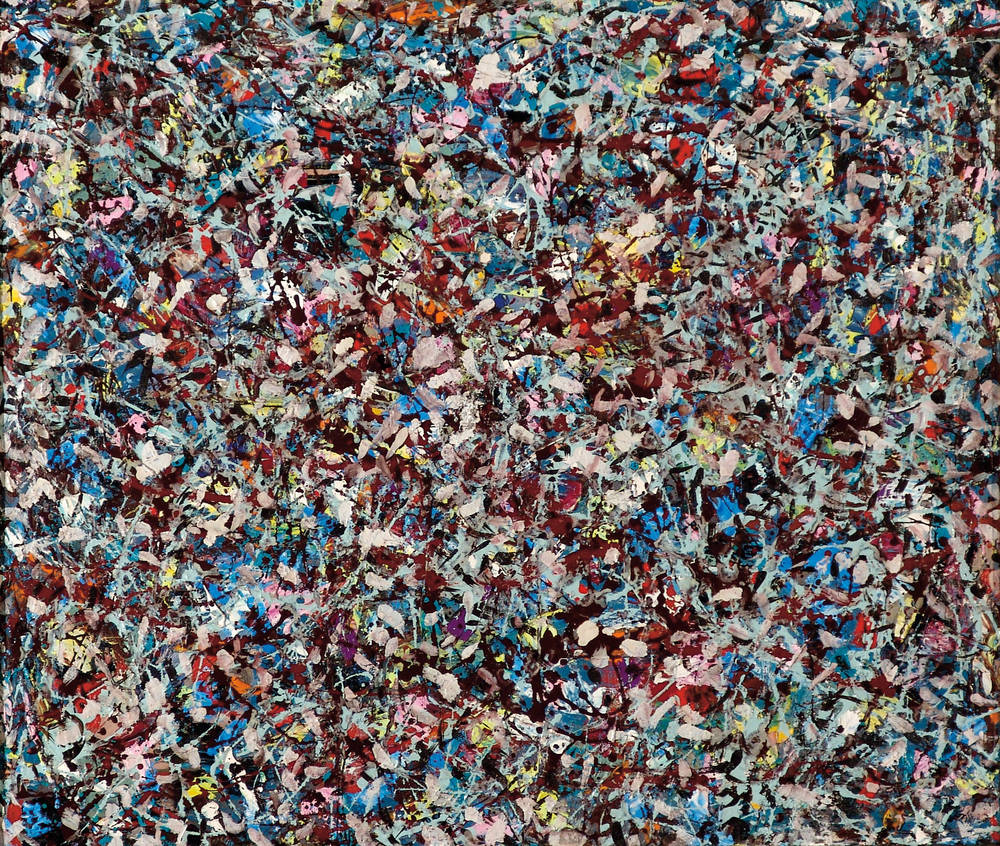
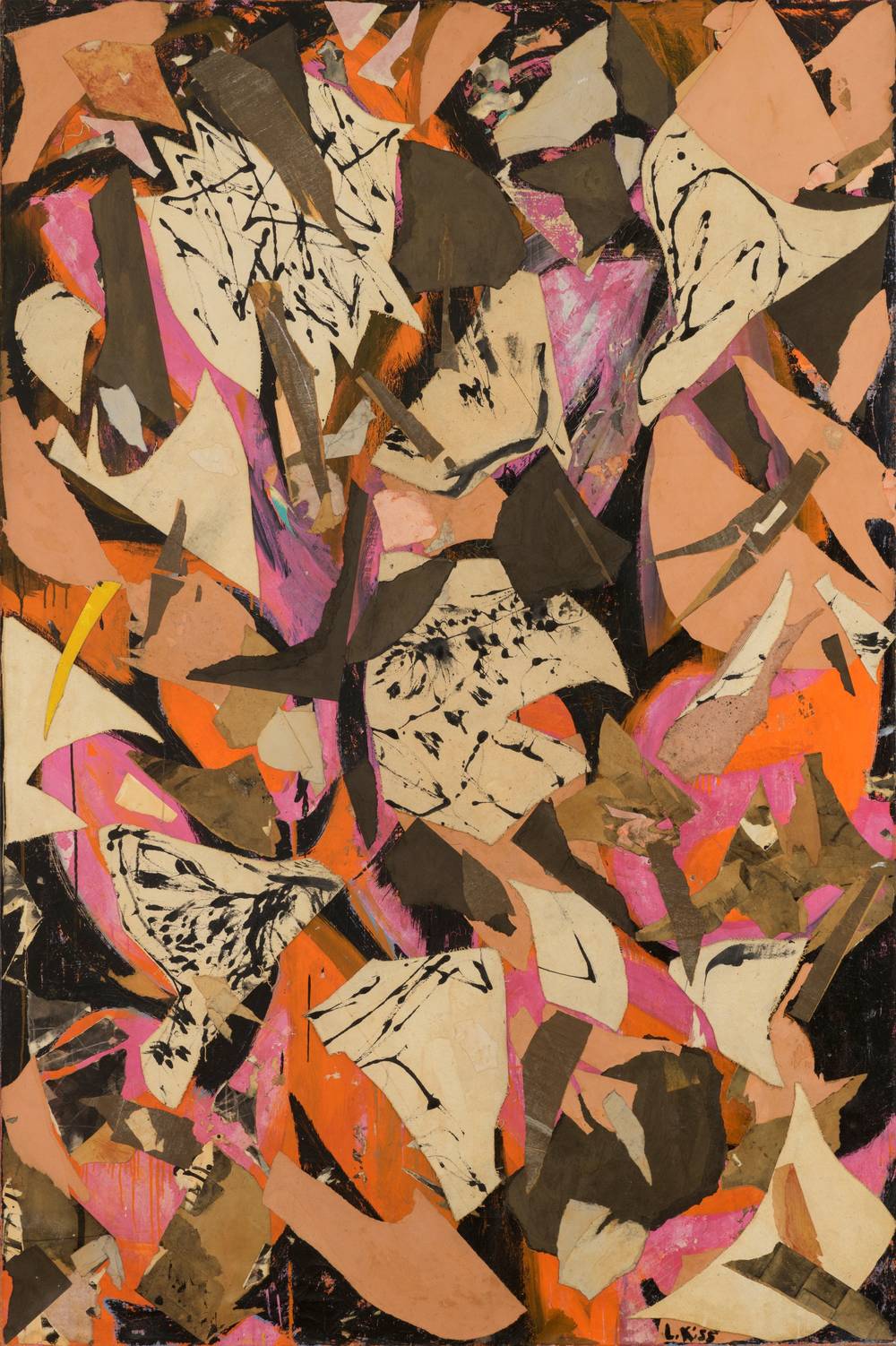
From 1956, Lee Krasner used Pollock’s former studio and worked for the first time on monumental canvases, which she attached directly to the wall. She created the large-format, gestural paintings of her “Umber” series, also known as “Night Journeys.” These are among her most expressive works. Since she refused to paint with color under artificial light and was only working at night during this period, the palette is reduced to white and umber. Krasner was 1.60 meters tall, but she worked on canvases up to a height of 2.50 meters, using her whole body and employing long-handled paintbrushes with expansive, rhythmical movements. In spite of the large formats, she never made preparatory sketches or preliminary studies before painting.
A recurring motif in her work is nature
In “Through Blue” and “Icarus”, Krasner experimented with painting with her left hand after she had broken her right arm. She often pressed the paint directly onto the canvas and then worked it with her fingertips. Another recurring motif in her work is nature. Starting in 1969, Krasner created parallel smaller-format series using gouache on handmade paper.
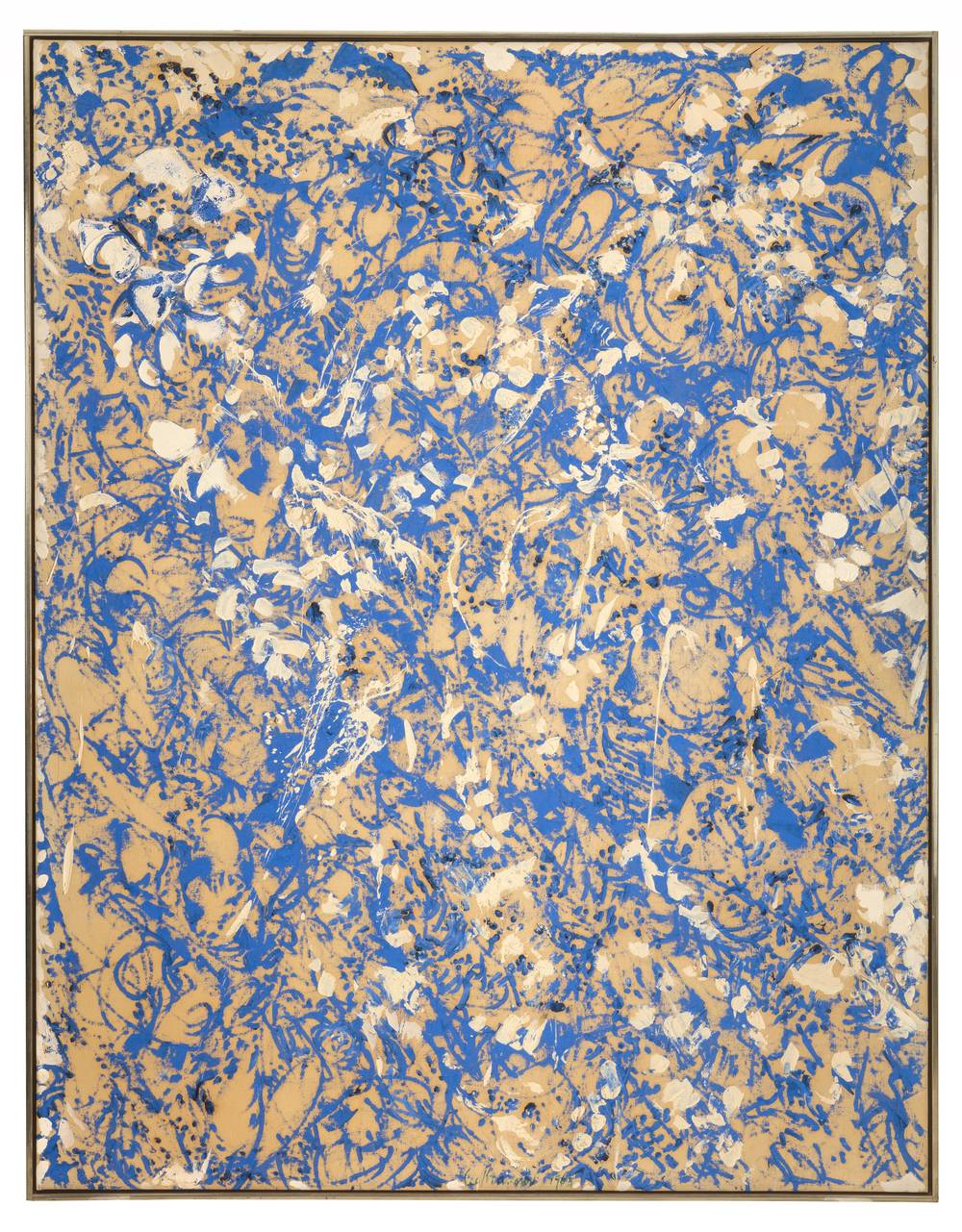
The exhibition concludes with two series from the artist’s late work. In the early 1970s, Krasner began a series in which she painted abstract forms with strongly contrasting colors. The Schirn presents one of the main works from this period. Painted works made during this phase evoke the color-field paintings of Mark Rothko or Barnett Newman, although Krasner’s later collages of the 1950s had already paved the way for this approach. In 1976, she created collages with sharp-edged forms, for which the artist used as material her own drawings and life studies in charcoal from her time as a student at the Hans Hofmann School, cutting them with scissors. As was the case with her early collages, these works represent Krasner’s critical exploration of her own work and legacy.
